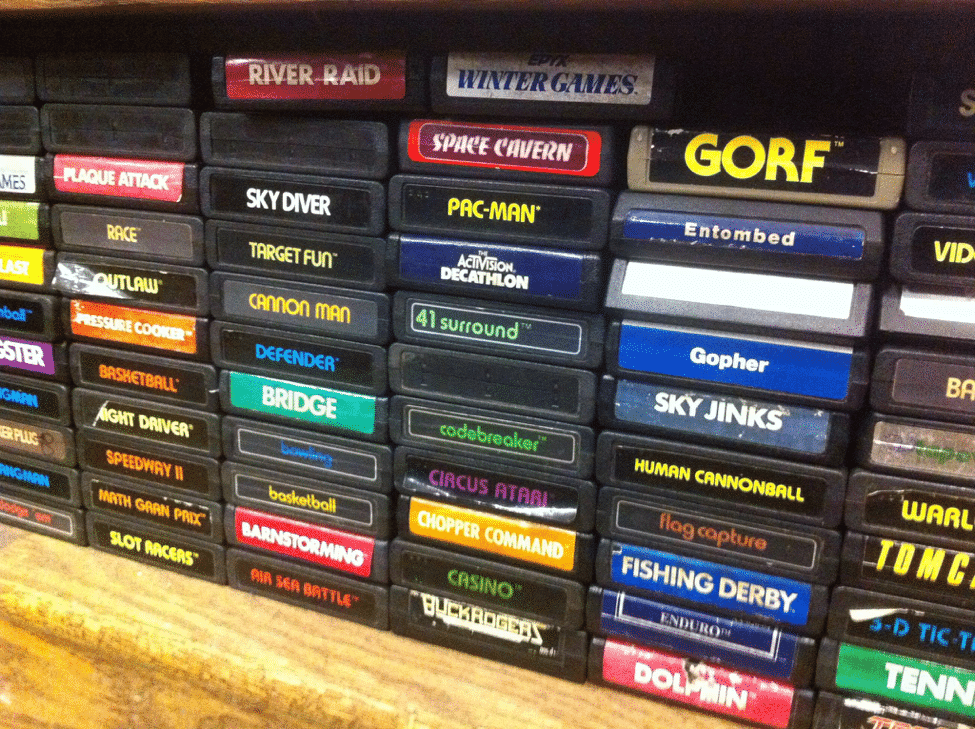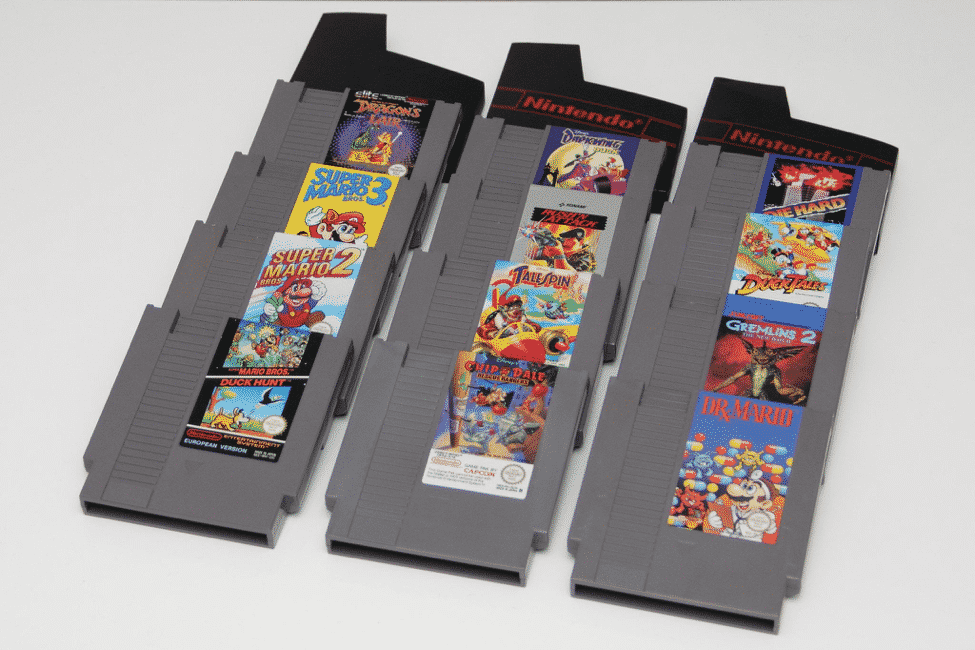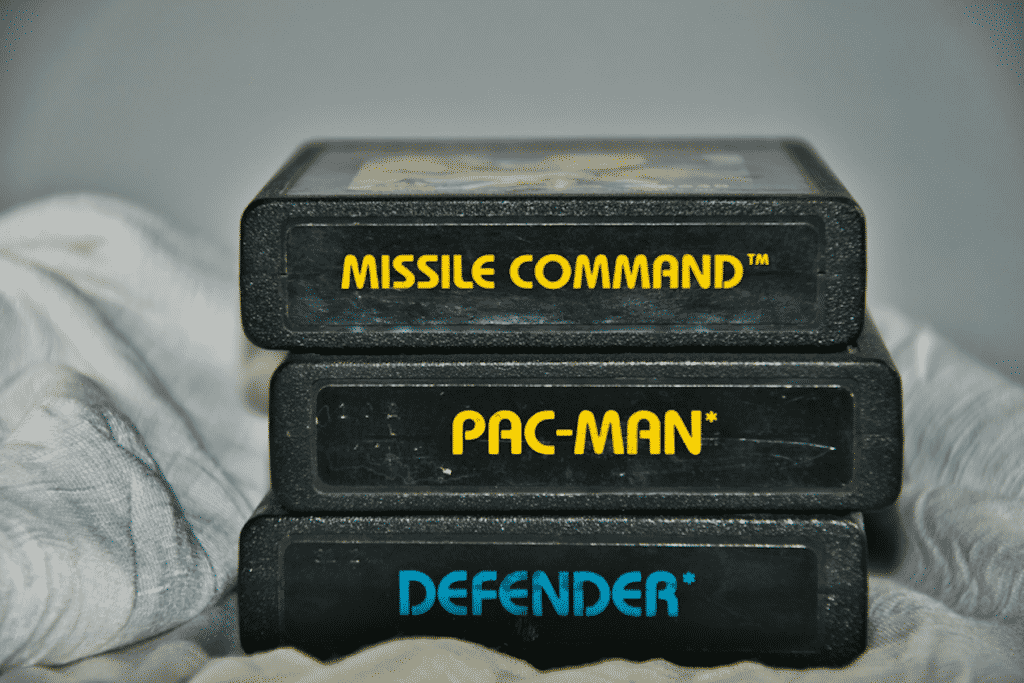Retro games are known for being straightforward, having rudimentary graphics, and, of course, for being old.
The truth is, many games are older than most gamers.
As a chess player, I am used to playing games that are older than me, but an electronic device being the same age as my parents? Humanity is truly amazing!
When the first household consoles hit the market, and a “video game developing company” became a reasonable business idea, things got really interesting.
It was a totally pristine environment. In the 80s, any video game idea you came up with was probably a new one.
But early developers had to face some hardships. You should learn from them if you are interested in becoming a game designer!
Luckily, you will have no shortage of research material. Nowadays, these old games are easy to get, thanks to dedicated retro game stores.
Sorting system limitations
If you are a fan of retro games, you may have noticed this as well.
Yes, many of those games are real works of art. They are innovative and engaging, and their difficulty levels, tunes, and setting make them instant classics.
But no one mentions the hundreds, the thousands of old games that are, well, terrible.
Here, I invite you to see even bad games as a source of knowledge. Even bad examples can help!
Game design back in the day had so many challenges. Hardware limitations constrained them, and the process of programming was not as simple as it is today.
Developers tested what worked and what didn’t and desperately tried to find the right balance between playability, difficulty, appeal, and fun.
This inexistence of standards had many advantages. The absence of “rules” unleashed people’s creativity to the extent of creating very original games.
The continuous process of iteration, trial and error, and testing boiled down to a handful of gaming formulas that are still alive today!
And as you will see, many games considered “retro” have become references and inspiration for new generations of titles that we see coming year after year.
But first, let’s make crystal clear what I refer to when I speak about retro games because it seems the jury is still out when it comes to that.
What Makes A Game “Retro”?

This is such a hairy subject. But I understand why people become overly passionate about it.
On the surface, it seems like a relatively simple concept.
And goodness me, it is not.
Of course, the term “retro” makes a direct reference to being defined by a time frame. A period of time.
Close, but not quite. It has more to do with certain developments in technology and game design that marked a change in how we conceive games.
It is like music. We call “Classic Music” a way of producing music that was dominant during a specific period, instead of just mentioning all the music produced in those periods.
It is more a “how” than a “when.”
So by analogy, “Retro games” refer to a way to conceive games, in the realms of production and design, that circumscribes to a period.
I will get technical; I don’t care. You people are smart.
Retro games specifically refer to games produced during a period that lasted about two decades in which:
- 240 lines at 60hz per scanline game video via cathode-ray tubes were the standard.
- Cartridges were the norm to store and distribute games.
- Two-dimensional games based on sprites dominated, and most gaming systems were just “sprite-handling” devices.
- Game development was done in assembly language specific to the architecture.
- System architectures were painfully diverse regarding their specific design and features (with some honorable exceptions, but this was the general scenario).
When we consider all these factors, we see a contrast between this era, the Retro Game era, and various groundbreaking events during the mid-90s.
I will go techy again. Please forgive me:
- The polygonal 3D approach that was largely impractical at first became easier to handle and changed the aesthetics and feel of games.
- The way design and development were conceived changed forever. Some engines like Quake and DOOM started to work like templates, giving extraordinary jumpstarts to games.
- The rise of developer-friendly tools, making game design easier (maybe the right term is faster, but you get the idea).
- Application programming interfaces and System architectures finally started to converge. So much that there were some points when you could run virtually everything using OpenGL.
So, does this mean 5th generation consoles are not retro? You may ask.
The fifth generation of consoles included the 3DO Interactive Multiplayer, Atari Jaguar, Sega Saturn, PlayStation, and Nintendo 64.
Some of these beauties are usually considered retro as well. Mostly because they were more like in the middle of both eras.
For example, they were still running at 240p and were used on cathode-ray tube displays.
And all of them but one were still dabbing in sprite-based, 2-D games.
So, for me, the retro game era ended June 23, 1996, when the world saw the N64 on the shelves for the first time.
For this system, developers were particularly interested in developing 3D games. That’s why so few side-scrolling sprite-based games appeared on the console.
Why You Want To Play Retro Games As A Game Designer.

Game designers are the unsung heroes behind our favorite games.
They are creative minds always thinking about us and creating new ways to enjoy the environments, characters, and experiences they give us.
A game designer is a mixture of artistic knowledge, technical prowess, and above all, a sensitive fellow able to understand their peers.
I am glad to be talking to one of them right now. Or better: a future one.
Regardless of where you are right now in the journey, I am sure you will appreciate retro games as a source of inspiration and ideas.
From a design point of view, retro games provide an endless collection of templates from which you can derivate your game.
This can be positive for your game, as people will recognize and become familiar faster with classic design approaches.
There is a thing with the learning curves. Classic styles of gaming are easier to learn as people played similar games before.
Even if your game is original in all aspects, I am sure there are certain general concepts about gameplay and user interface friendliness that you can pick up.
Or conversely, you can look at the games that did not do very well and avoid their mistakes.
Getting some retro games and starting a personal collection can be a good step to improve your sense of what a game should be.
But don’t take only my word. Keep reading; I have the receipts.
Retro Games That Continue Influencing Modern Design
The only way to make people see your point is through example.
So, let me show you some games that set the grounds for most of what came after. The funny thing is that many people do not recognize how impactful these games were.
But we are not like those people. At least, not anymore!
Exploring Mazes, Powering Up: Pac Man, 1980
The next time you imagine any of the following: bonus items, power-ups, enemies that move with an AI, and maze exploration; in one of your games, then you need to thank this insatiable yellow fellow.
But maybe what Toru Iwatani gave us with Pac-man is the use of the classic main character that is easily recognizable. A mascot!
The rest of the story, you probably know it! Pac-man became such an icon of video games, appearing on almost all consoles until this day.
Simple, Compelling, Accessible: Tetris, 1984
Alexey Pajitnov was minding his own business at the Moscow Academy of Science when an idea struck him.
He started to design a simple game based on geometry and building blocks.
Little did he know at the moment that he had just created the legendary Tetris, the perfect example of how a game just needs to be simple, accessible, and compelling to be successful.
Tetris set the standard of what a puzzle game has to accomplish. So, the next time you get on your phone to play Candy Crush Saga, thank the good old Alexey for the inspiration he provided to its creators!
Open Worlds, Games As Experiences: Elite, 1984
This game was the first real attempt to simulate flying combat. But this is not the only thing in which their creators, David Braben and Ian Bell, were the first.
Video games until then were seen as a way of competing. It was about the high score and beating an opponent.
Elite was the first take on what we call now “open-world” games. It allowed players to make meaningful decisions that could change their performance in the game.
They offered video games as an experience for the first time. And we have been looking at them like that ever since!
Plots, archenemies, playability: Super Mario Bros, 1985
The Big N is not called that for free.
Nintendo is a game design colossus because they are all about creating memorable experiences rather than focusing on competition and hardcore gaming.
Yes, the original Mario game was not easy. Stop yelling at me.
But it was easy to play. The game’s physics felt natural and easy to predict, and your control over the silly plumber was total.
Add a lovely and colorful world, an archenemy, and a plot, and you will have a perfect gaming experience.
Every platform game you know has taken something from the Super Mario Bros. formula. So, more to thank the classics for!
The precursor of 3D gaming: Doom, 1993
Doom was such a controversial title for its time.
Think about it. Going around blasting hellish creatures with your shotgun, and those creatures literally explode, scattering their guts.
Doom combines perfect level design, a frightening tone and ambiance, superb controls, and absolutely terrifying enemies.
Sounds familiar? I bet! Because every single first-person shooter has elements that were first portrayed in this classic from Id Software.
I don’t care. For me, Doom was the game that set up the bar for what the future full-blown 3D games should accomplish.
Don’t Over Do It: Avoiding the “Retro Trap.”
There is a trap lurking in the shadows when using retro games as a source of inspiration.
The trap gets you when you don’t want to risk it and follows a pre-existing formula so closely that you end up creating a clone game.
Yes, many games we see today are inspired by games from the past, but they try to add something new. Something that makes them standalone instead of part of a generic category.
If you stick to the formulas too much, your game will not be memorable. I have seen dozens of games that are just functional copies of things I saw before. They are good as projects to exercise your design and developing skills, but not as final products.
So, my advice is, get general ideas. Look for concepts and the things that worked for certain games, and do not focus too much on specific mechanics.
Look for those games that flopped. Many of them had excellent ideas that just were executed poorly.
You can triumph where your predecessors failed and then give them a shoutout. They will surely thank you from their hearts.
Where to start?

Yes, I will dedicate a section to state the obvious.
If you want to soak yourself in ancient knowledge, you need to practice the ancient arts.
You need to get and play lots of old games.
Go through the libraries of each console of your interest, visit blogs offering curated lists, and get as many games as you can.
This could serve multiple purposes!
First, you will have a reference library of games to visit and experience yourself.
Second, retro gaming is fun and good for your health because it evokes nostalgia, a positive feeling.
And third, retro games tend to increase in value as time passes, so they can even be a good investment. Please note I am not trying to give you financial advice with this.
Referring to how he used the knowledge of his predecessors to come up with new ideas, Sir Issac Newton once said in a letter: “If I have seen further, it is by standing on the shoulders of giants.”
You have plenty of giants to look up to. Go then, and step on their shoulders!
